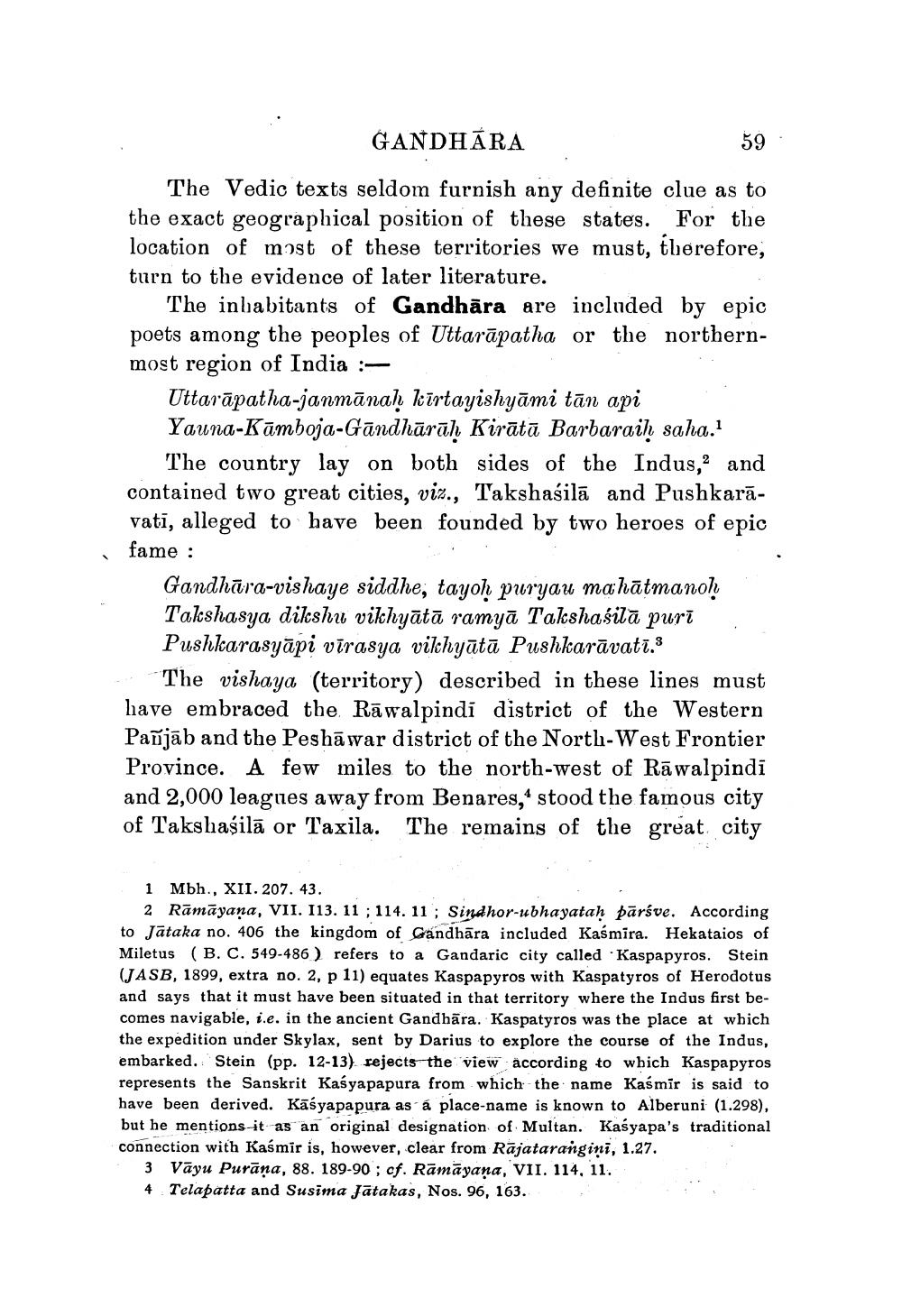________________
GANDHÁRA
59 The Vedic texts seldom furnish any definite clue as to the exact geographical position of these states. For the location of most of these territories we must, therefore, turn to the evidence of later literature.
The inhabitants of Gandhāra are included by epic poets among the peoples of Uttarāpatha or the northernmost region of India :
Uttarāpatha-janmānah kīrtayishyāmi tān api Yauna-Kāmboja-Gāndhārāh Kirātā Barbaraih saha.
The country lay on both sides of the Indus, and contained two great cities, viz., Takshasila and Pushkarāvati, alleged to have been founded by two heroes of epic fame :
Gandhāra-vishaye siddhe, tayoh puryau mahātmanoh Takshasya dikshu vikhyātā ramyā Takshasilā purī Pushkarasyāpi vīrasya vikhyātā Pushkarāvatī.3
The vishaya (territory) described in these lines must have embraced the. Rāwalpindi district of the Western Pañjāb and the Peshāwar district of the North-West Frontier Province. A few miles to the north-west of Rāwalpindi and 2,000 leagues away from Benares,' stood the famous city of Takshasilā or Taxila. The remains of the great city
1 Mbh., XII. 207. 43.
2 Rāmāyana, VII. 113. 11 ; 114.11 ; Sindhor-ubhayataḥ pārśve. According to Jātaka no. 406 the kingdom of Gandhāra included Kaśmira. Hekataios of Miletus (B. C. 549-486 ) refers to a Gandaric city called Kaspapyros. Stein (JASB, 1899, extra no. 2, p 11) equates Kaspapyros with Kaspatyros of Herodotus and says that it must have been situated in that territory where the Indus first becomes navigable, i.e. in the ancient Gandhāra. Kaspatyros was the place at which the expedition under Skylax, sent by Darius to explore the course of the Indus, embarked. Stein (pp. 12-13) rejects the view according to which Kaspapyros represents the Sanskrit Kaśyapapura from which the name Kaśmir is said to have been derived. Kāśyapapura as a place-name is known to Alberuni (1.298), but he mentions-it as an original designation of Multan. Kaśyapa's traditional connection with Kaśmir is, however, clear from Rājatarangini, 1.27.
3 Vayu Purāna, 88. 189-90 ; cf. Rāmāyana, VII. 114, 11. 4 Telapatta and Susima Jātakas, Nos. 96, 163.




